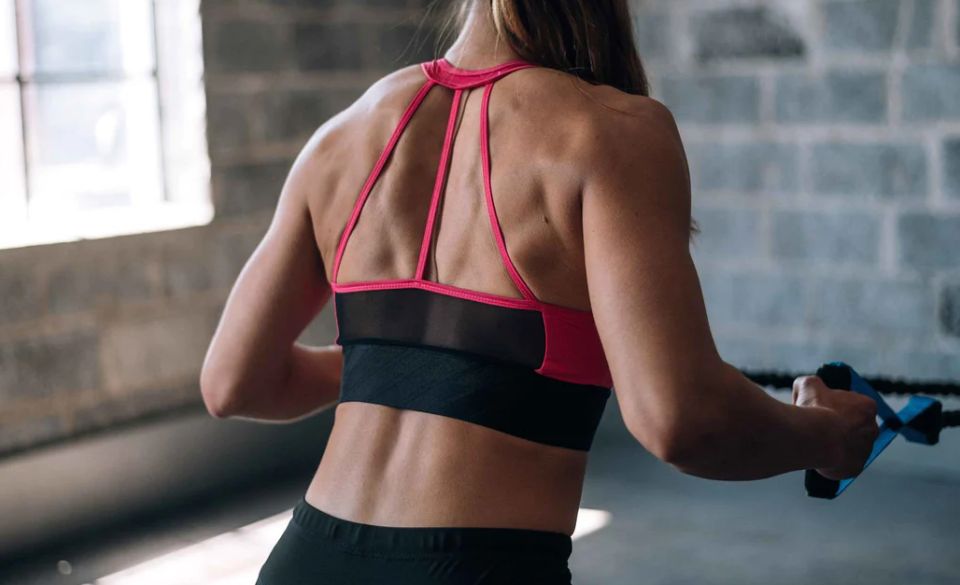
Top 8 Exercises for Broadening Your Back
Page Contents
Cultivating a well-defined upper body using these top eight exercises for achieving a wider back is essential for athletes aspiring to sculpt prominent shoulders and a tapered waist—a physique commonly referred to as the V-shaped back.
Here we share some of our favorite exercises for expanding your back width and includes training techniques to enhance overall back size.
Let’s delve into the details.
What are the benefits of a wide back?
A wide back offers various physiological and aesthetic advantages, contributing to overall health and fitness. Here are some key benefits:
a. Improved Posture:
A wide back often correlates with strong and well-developed muscles, such as the latissimus dorsi. These muscles play a crucial role in supporting the spine and promoting good posture. Strengthening the back muscles helps counteract the effects of prolonged sitting and poor posture, reducing the risk of back pain and discomfort.
b. Enhanced Functional Strength:
A wide back is indicative of strength and muscle development, particularly in the upper body. This contributes to improved functional strength, making daily activities and physical tasks more manageable.
c. Balanced Physique:
Aesthetically, a wide back contributes to a balanced and proportionate physique. It complements other muscle groups, such as the chest and shoulders, creating a pleasing V-shaped silhouette. This balanced physique is often associated with athleticism and overall fitness.
d. Increased Metabolism:
Developing a wide back involves engaging large muscle groups during exercises like rows, pull-ups, and deadlifts. Building and maintaining muscle mass can contribute to an increased resting metabolic rate, aiding in weight management and overall metabolic health.
e. Injury Prevention:
Strengthening the muscles in the back can help prevent injuries, especially in the lower back. A well-developed back provides better support for the spine and can reduce the risk of strains and injuries during physical activities.
What does a wide back mean?
A wide back typically refers to the development and width of the muscles in the upper and middle back, especially the latissimus dorsi. The term is commonly associated with a V-shaped torso, where the shoulders are broad, and the waist is narrower, creating an inverted triangle appearance. The width of the back is often a result of targeted strength training and muscle-building exercises that focus on the back muscles.
In fitness and bodybuilding, achieving a wide back is a desirable goal as it contributes to a symmetrical and aesthetically pleasing physique. It signifies muscle development in key areas of the upper body and is often considered a symbol of strength and fitness.
What are the benefits of wide shoulders?
Wide shoulders are another aspect of a well-developed upper body and offer several benefits:
a. Increased Upper Body Strength:
Wide shoulders indicate strong deltoid muscles, contributing to enhanced upper body strength. This strength is beneficial for various activities, including lifting, pushing, and carrying.
b. Enhanced Aesthetics:
Wide shoulders contribute to an attractive and V-shaped upper body, creating a visually appealing physique. Well-defined shoulders can improve overall body proportions and symmetry.
c. Functional Mobility:
Well-developed shoulders contribute to improved range of motion and functional mobility. This is particularly important in activities that involve reaching, lifting, and rotating the arms.
d. Clothing Fit and Confidence:
Wide shoulders can positively affect how clothing fits, giving a more tailored and structured appearance. This can boost self-confidence and enhance the overall presentation of an individual.
e. Injury Prevention:
Strengthening the shoulder muscles helps stabilize the shoulder joints, reducing the risk of injuries. Balanced shoulder development can contribute to better shoulder function and resilience during physical activities.
f. Improved Posture:
Wide shoulders, when accompanied by a strong back, can contribute to better posture. Well-developed shoulder muscles assist in supporting the upper body and maintaining a more upright position.
Both a wide back and wide shoulders offer a range of benefits, from improved aesthetics to functional strength and injury prevention. Incorporating targeted exercises into a well-rounded fitness routine can help achieve and maintain these physical attributes.
The 8 optimal exercises for a broader back:
1. Long Angle Dumbbell Row
Similar to the standard dumbbell row, this variation involves pulling the dumbbell further back, closer to your hips rather than your belly button. This modification minimizes bicep involvement, directing tension primarily to your lats and the back of your shoulders.
2. Close Grip and Wide Grip Pull-Ups
Both grip variations offer distinct advantages for your back. Wide grips emphasize the lat muscles over the biceps, while close grip pull-ups engage the biceps and pectoral muscles more, enabling you to perform more repetitions or handle heavier weights.
3. Standing Cable Pullover
This exercise focuses on enhancing the lats, the largest muscle group in the back. The latissimus dorsi play a crucial role in various pulling exercises, providing stability and support for the spine.
4. Reverse Grip Rows
Targeting the lower lats more than the mid-back, this row variation emphasizes pulling the shoulders back and protruding the chest to maintain the natural spinal curve.
5. Deadlift
Considered one of the most effective exercises for developing a thicker, wider, and stronger back, the deadlift allows you to lift the heaviest weights. Ensure proper form and gradually increase the load after mastering the technique.
6. Dumbbell and Barbell Pullovers
When executed correctly, these exercises effectively target the lower pecs, abs, lats, and triceps, contributing to a wider back.
7. Lat Pulldown
Performed using a machine, this popular gym exercise strengthens and builds the lats. The movement involves stretching the arms overhead, pulling a bar toward you, and releasing it in a controlled manner.
8. Seated Cable Row
A horizontal seated pulling exercise that challenges and enhances the upper body, the seated cable row involves bracing the feet and pulling a weighted cable while seated on a bench.
Tips for using these top exercises for a wider back
– Focus on targeting the back muscles by isolating them as much as possible during each rep.
– Embrace progressive overload by consistently increasing the workload to promote muscle growth.
– Ensure a good stretch by fully extending your limbs during the negative portion of each exercise.
– Incorporate 4 to 5 exercises into your routine, performing each for 3 sets of 6 to 10 reps with a 2 to 3 minute rest between sets. – —
– Prioritize heavy, challenging loads, starting with compound lifts like the deadlift or barbell row. Additionally, optimize your nutrition to support maximum muscle growth.
Final Words – Top 8 Exercises for Broadening Your Back
In conclusion, the pursuit of a well-defined upper body through targeted exercises for a wider back is not merely a quest for aesthetics but a fundamental aspect of holistic fitness. The benefits extend beyond a visually pleasing physique to encompass improved posture, functional strength, and injury prevention.
Understanding the significance of a wide back and shoulders reveals their role in creating a balanced, proportionate physique associated with athleticism and strength. The provided exercises, ranging from the Long Angle Dumbbell Row to the Seated Cable Row, offer a comprehensive approach to achieving a broader back and well-defined shoulders.
Recognizing the advantages of a wide back, including enhanced posture, functional strength, and a balanced physique, underscores the importance of incorporating these exercises into a fitness routine. Moreover, the benefits of wide shoulders, such as increased upper body strength, improved aesthetics, and injury prevention, highlight the interconnectedness of various muscle groups in achieving overall fitness.
For those embarking on this fitness journey, the provided tips offer valuable insights, emphasizing the isolation of back muscles, progressive overload, and the importance of a full stretch during exercises. Incorporating a well-rounded selection of exercises, prioritizing heavy loads, and maintaining proper nutrition are crucial steps toward maximizing muscle growth and achieving a broader, stronger back.
In essence, the commitment to cultivating a wider back and broader shoulders through targeted exercises and informed training strategies not only contributes to a desirable physique but also fosters a foundation for improved health, functionality, and overall well-being.



